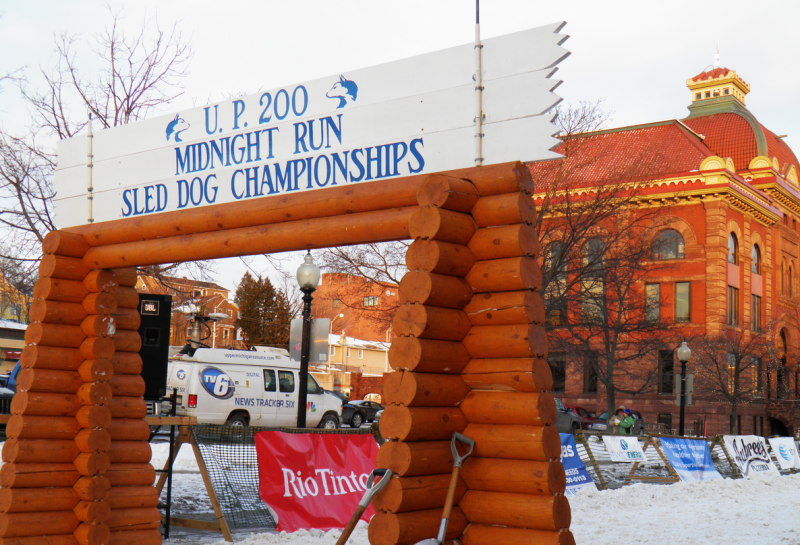
The first UP 200 was held in February 1990.
This past Valentine’s Day, puppy love was in the air in downtown Marquette, Michigan. Alaskan Husky love, that is.
Couples, families, and nearly everyone from miles around snuggled into Marquette’s snow-laden streets to watch the start of the 25th Annual UP 200 Sled Dog Race—a qualifier for Alaska’s Iditarod.
For this race, the mushers and their 12-dog teams ran from Marquette to the first checkpoint in Wetmore, then further east to Grand Marais, Michigan. There they turned around to head back to Marquette. Most teams finished this 240-mile course two days later in the afternoon.
For Friday night’s start, the streets were packed. With thousands of people downtown, many daytime businesses reopened in the evening to provide warmth, unique gifts, beverages, and live music. This scene struck a chord; the locals really embraced the audience, opening their doors to provide a community feel to neighbors and strangers alike.
A total of 14 teams took off one minute apart at 7 p.m. that night to the cadence of the crowd chanting, “10, 9, 8 … 3, 2, 1. Go!” Cheering and flashes from cameras filled the area.
During the take off, the announcers gave a little background on each musher as they pulled up and waited for the countdown. They also promoted a feature new to this year’s race; each musher was tagged with a GPS, so curious watchers could see real time standings and track their favorite musher throughout the route.
The sled dogs themselves acted like pack of wild beasts. The handlers had to use all their strength to hold them back while approaching the starting line. The dogs yipped, barked, howled, jumped, pulled on the harnesses, and made sounds that humans could never imitate. They were focused on one thing—running.
Off the trail, they actually crave human contact. Like your dog at home, these animals love to receive attention. The mushers usually let people pet their dogs, as long as they ask first.
Throughout their time on the trail, teams are faced with the challenges of hills, creek crossings, lonely wilderness, deep snow, and frigid temperatures. Intermittent cheering spectators provided a reminder of other life and heart-warming encouragement. Besides the bare necessities needed to endure an excursion like this, mushers had to carry plenty of fortitude and stamina on their sled.
During their race, the mushers are required to take a minimum of 16 hours rest. They are allowed to rest in any increments that work best for their team. They raced through Friday night, all day and night on Saturday, and concluded on Sunday afternoon, pulling in to a finish line of exuberant fans.
This year, Keith Aili, a veteran racer from Ray, Minnesota, was the first to cross the finish line. With less than a half hour finish behind him, Ryan Anderson, another veteran from Ray, took second place. This race offers a purse of nearly $30,000 in prizes, with each finishing team taking home a cash prize.
You can view all the statistics, other musher standings, see the course map, and find out how to register for next year at the UP 200 website.
Image courtesy of UP 200
 Your Privacy Choices
Your Privacy Choices
 The
The